#female cinematic representation
Explore tagged Tumblr posts
Text
The crime organization known as the Tracksuit Mafia played a significant role on the Marvel Cinematic Universe TV series Hawkeye; now, the gang’s commander, Maya Lopez, is the focus of a new spinoff series, Echo. Alaqua Cox, who plays the character on both shows, takes the spotlight in the new series, and she says it’s been interesting — and a little bit difficult, at times — to flesh out what had been a small role into a starring role.
Echo is currently streaming on Disney+.
#Alaqua Cox#Maya Lopez#Echo#Hawkeye#Marvel#DisneyPlus#Superheroes#Representation Matters#Diversity In Media#Women In Film#Inspiring Women#Marvel Femmes#Female Lead#New Series#Interview#Disney+#MCU#marvel cinematic universe#Entertainment#Entertainment news#Celebrities#Celebrity#celebrity news#celebrity interviews#Television#television news#TV news
1 note
·
View note
Text
i ran a combat this weekend that went really well and one of my npcs got beat to shit but also got to revivify a pc and it was just really chewy and cinematic and not that she isnt always on my mind but shes been on my mind a lot more this week BUT
ive been reflecting a lot on her year in the game so far, and the reasons i made her gender conforming but visibly trans when i introduced her, versus how thats evolved with her relationships to the pcs and other npcs now
and i dont know. it makes me really emotional. i think theres no right way to do trans representation but there are certainly some wrong ways. i think making her the first binary trans woman introduced and also pretty clockable would rub a lot of people the wrong way. shes tall, shes buff, she has a deeper voice, she doesnt cover her adams apple. and as a trans man who passes pretty damn easily it means so much to me that she Doesnt and shes so like ... adored? and cherished?
she was introduced as a roadblock for the party and got adopted very quickly, soon becoming a staple of the game. my players are obsessed with her and adore her and talk about her all the time. anytime she does anything theyre like okay but shes our babygirl and we love her forever and also can we marry her. shes an autistic trans lesbian wolfgirl, and her being trans is a lore point because shes the angel of the female wolf god. shes dopey, shes awkward, shes a little stupid, shes very caring, she makes the puppy eyes emoji face just at all times
and shes not visibly gay but is visibly trans. shes not punk. she doesnt have a shaved head or tattoos. overall shes pretty cottagecore and has middle school girl handwriting. she really loves baking and sewing is her most "fun" hobby. shes very gender conforming and also its pretty easy to tell shes trans and everyone just. loves her? two pcs are very parental towards her, we're leaning towards a romance with another pc. despite being a big strong knight, when shes scared, she gets comforted and consoled. she got hurt during the fight and cried about it and got hugged
i dont know. this is a very long rambly post but. living in a very conservative bible belt state, i feel a lot of acceptance as a man and i feel its very very conditional on the average person not knowing im trans. my friends are great and my cohort is largely great and my professors have been supportive. dating has been,, mixed. but then i do wonder how review bombed i would get if my students knew. i wonder how much of how well people treat me is dependent on me appearing to be something im not
and florence cant hide that shes trans!! and people love her!! they think shes wonderful and loveable and hot and adoptable and also complicated when conflict happens. theres no reveal theres no coming out its just like. yep heres florence shes trans shes dorky and sweet and cute. because of the magic of this world, some people may have Questions of how she transitioned, but its not like ... her identity ever gets questioned. you know? its not hidden and also not a problem. its just florence. and shes been such a good character for me to play because of that
okay post over go support your local trans doggirl
74 notes
·
View notes
Text
A Non-Exhaustive List of my Favourite Academia-esque Movies
Dead Poets Society (Obviously)
Good Will Hunting (Robin Williams is a great mentor #2)
Flatliners (the one from the 1980s, not the 2010s remake. Though both are good, the old one is much more cinematic and has a fantastic cast. Also, some STEM representation!!)
Hidden Figures (badass ladies doing physics and computer math, it counts)
Mary Shelley (2017, accurately portrays Lord Byron as a Hot Mess Express)
Mona Lisa Smile (female DPS in college and with an art professor, a bit of a disappointing ending)
Little Women (2019, I KNOW the costumes are bad. I know. I don't care, it's a really good book-to-film adaptation)
Emma (2020, the one with Anya Taylor-Joy, easily my favourite adaptation of my favourite Jane Austen novel)
Oppenheimer (history! physics! tortured scientist! amazing sound design! yes!)
20 notes
·
View notes
Text
Youtube Video Essayists part 2
I made one of these lists years ago, so if you're wondering why big names like hbomberguy and Kat Blaque aren't here, that's why.
Science and Tech
Miniminuteman - Archaeologist and science educator whose content focuses on archaeological mysteries and debunking pseduoarcheaology. Videos average about 20 minutes to an hour and a half.
Adam Something - Most of his videos focus on urbanism and transport (it's more interesting than it sounds, I promise), but he also occasionally covers politics and culture. His bread and butter is tearing apart impractical billionaire passion projects (hyperloop, the cybertruck, Munger Hall). Big fan of trains. Average video playtime is 10 to 20 minutes.
Petal Palmer - A pre-med student and cancer patient who covers true stories of medical oddities and malpractice. Some of my favourites are on the Tylenol murders, the woman who froze alive (and survived unscathed), and fraudulent cancer awareness orgs. Videos run from 10 minutes to an hour and a half.
Politics and Culture
Caelan Conrad - Their channel mainly covers gay and trans rights, with a focus on debunking right-wing narratives and commentators. Videos average 30 minutes to an hour and a half.
Fundie Fridays - Started as a channel where Jen did her makeup and talked about various figures and sects of Christian fundamentalism, has since grown to include her husband and to cover politics. Very respectful in her tone, and very funny. I'd recommend their videos on the Miracle Mineral Solution (bleach), Eugene Scott, Duck Dynasty, and Gwen Shamblin Lara. Their early videos are only around 10 to 20 minutes, but these days they run as long as an hour and a half.
Khadija Mbowe - Honestly, her channel could fit under any of these categories. Her content varies wildly, but is always engaging and thought provoking. I'd recommend her videos on meritocracy in health and weightloss, Poor Things and engaging with 'problematic' material, and Barbie and white feminism. Videos average 20 to 40 minutes
F.D Signifier - Very well researched and presented commentary on politics, media, and black manhood. I'd recommend his videos on Eminem and white rappers, what makes men desirable, white men and edge lord movies, and how black athletes are exploited. Videos average 40 minutes to an hour and a half.
Foreign Man in a Foreign Land - Commentary on race and Caribbean culture. I'd recommend his videos on racism in gaming, tourism as the new slavery, and Elizabeth II and english colonialism. Videos average 20 minutes to an hour.
Arts and Entertainment
Broey Deschanel - Channel focuses on film and film criticism. I'd highly recommend her videos on the problems with method acting, feeling cynical about Barbie, and the 'death' of cinema. Videos average about 20 to 50 minutes and have a high production value.
Jane Mulcahy - Film and tv analysis, with a focus on media aimed towards female audiences. Lighthearted but thoughtful. I'd recommend her videos on the Red White and Royal Blue movie, Lifetime 'Daddy' movies, and the 'psycho biddy' genre. Videos average 20 minutes to an hour.
Verily Bitchie - Examining movies and tv through a queer and feminist lense, along with occasional videos on culture on politics. I'd recommend her feminist critique of Doctor Who, a look at bisexual representation on TV, and her video on trial by tiktok. Videos average 10 minutes to an hour and a half.
Coldcrashpictures - Pretty standard long-form film analysis. I'd recommend his videos on the current state of Hollywood, Freaks (1932) and old school horror, the 2020 dumpster fire watchlist, and cinematic masculinity. Videos average 20 minutes to an hour.
Internet Culture
WURLD - Commentary on internet trends and culture. More lighthearted and off the cuff in her presentation. Best videos include Is Booktok Ruining Reading?, the obsession with reusable cups, and hustle culture is a nightmare. Videos run from 15 to 45 minutes.
Gabi Bell - A lot of variation in her content, ranging from internet culture, to (bad) movies, to (bad) tv. I'd recommend her videos on tiktok drama and fake verification. Videos average 10 to 50 minutes.
Tiffany Ferg - Content focused on internet analysis. I'd recommend her videos on concert culture, learned helplessness and tech illiteracy, and 'body trends' and plastic surgery. Videos average from 20 to 40 minutes.
Salem Tovar - Nuanced commentary on internet culture. I'd recommend her videos on gen Z's aesthetic obsession, millennial parenting problems, and filming strangers in public. Videos average from 30 minutes to an hour and a half.
Ro Ramdin - Probably the funniest person on this list, I can't recommend her enough. Videos are thoughtful well edited. I'd recommend her videos on Hogwarts Legacy and financially supporting JK Rowling, the NFT island, the metaverse, and XQC. Videos average 20 to 40 minutes.
Also, misc. video essays: 2010s Pop Feminism: A Painful Look Back, We Need to Talk about TikTok's Obsession with Face Reading and its Dark History, Transphobia: The Far Right and Liberalism, You're Wrong about Modern Art, Who is Killing Cinema? - A Murder Mystery, Transition Regret & the Fascism of Endings, I Debunked Every "Body Language Expert" on Youtube, These Stupid Trucks are Literally Killing Us, How Conservatives Created (and Cancelled) Gender.
31 notes
·
View notes
Text
Essay on erasure under cut
@roze-realm @kis5ki5skai
The Marvel Cinematic Universe has a very big problem: the erasure of minorities in their characters. They continuously change parts of characters in order to appeal to a larger demographic of audiences. When in reality- the Marvel comics were never about that. In comics we have characters that aren’t even subtle about being minorities. There’s even an entire franchise based around the idea of superpowers creating a minority that faces major discrimination. All whilst telling a cohesive story. In the movies however, the characters that are portrayed as a minority like in comics don’t get a good story.
This is most present in a certain family. The Maximoff’s are a jewish-romani family. However in age of ultron where the scarlet witch and her brother were introduced they are cast as white. As well as had them work with literal nazis. Not only that but the movie immediately killed off one half of the twins. Peitro despite at least keeping his name unlike his X-Movies counterpart, was somehow shot to death by bullet’s he is meant to be faster than.
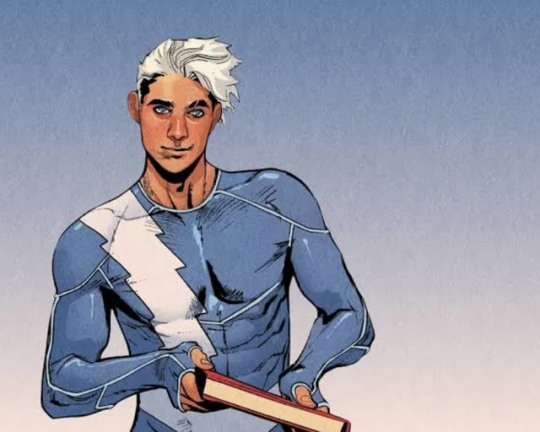

In the new show Agatha all along they cast Joe Locke as Billy Kaplan. Many may argue that Agatha all along is playing the representation game well, having a mainly female cast with a black and asian characters and the only male on board being established gay and jewish. However this view fails to point out the fact that we only ever see William Kaplan as portrayed as jewish. Any associations to religion with Billy Maximoff, who appears to be a completely different character, are to witchcraft adjacent religions such as wiccan and paganism. This paired with the fact that by extension of his mother’s erased romani identity, his was erased as well, it’s not looking good for him. Fortunately there’s still hope for his brother.
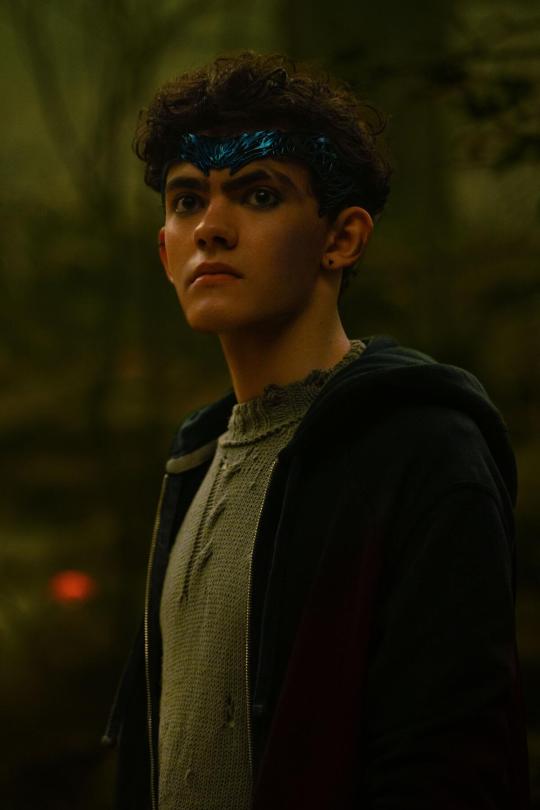
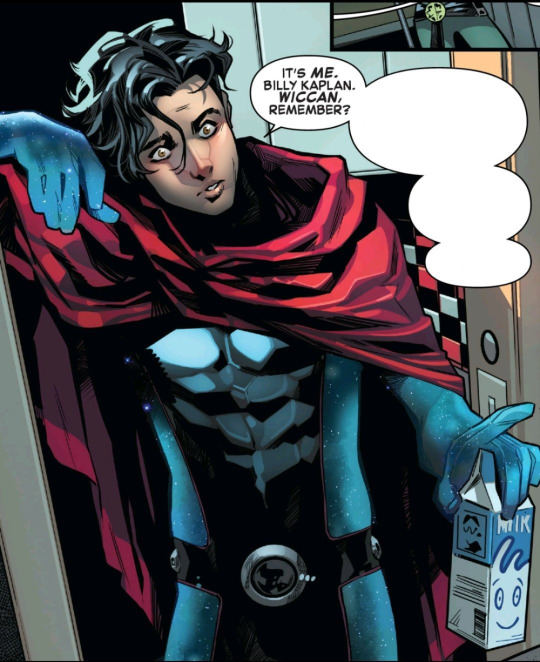
Now as much as a good example as the Maimoff family is, there are many others. Such as, America Chavez. Now my knowledge on the comic book character is limited due to the fact that simply haven’t gotten there yet, however I know quite a bit about her appearance in Marvel Rising, a series of short films focusing on new jersey hero’s such as Ms. Marvel or Inferno. And in such she was displayed as a dark skinned Spanish aligned queer woman working a job that was barely paying for her schooling. And in multiverse of madness, she’s practically the definition of white washing. Not to mention the down play of her character’s strengths and sass. Everything that makes America, America is taken away. It’s one thing to play down what makes a character a minority but that alongside with the down play of her characterization makes her into a weak link in the very weak chain that is multiverse of madness.

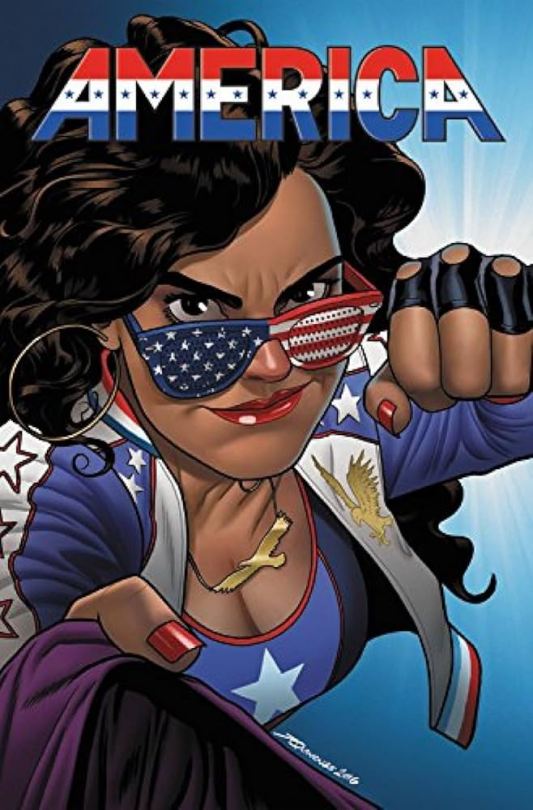
Now another great instance would be Loki, who in comics is gender-fluid and pansexual. In the movies however is treated solely as male and straight. In an attempt to give him a love interest the writers posed the question, “What if Loki was a woman?” However if they were simply comic accurate, there would be no alternative female version of Loki, because sometimes he is she. Loki is the epitome of a shapeshifter who’s gender-fluid. In fact they are the first that comes to mind when asked to think of the trope- simply because it’s done so well. Loki is meant to be a character who simply is, and is unapologetic for who they are good or bad, male or female, unfortunately the MCU gave us a bratty theater kid and called it a day.
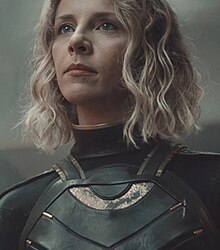
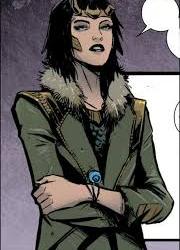
After this point tw: Child abuse
Now all of this is well and good- but the final straw would be the Hulk. In comics the Hulk, or Bruce Banner has an incredibly tragic backstory. He is a demonstration of how at times the greatest danger to a child, is the one in their own home. Bruce was abused by his father as a child which eventually led to him forming dissociative identity disorder. The alter to Bruce being Hulk an angry and out of control monster, whom is eventually given its own form different from Banner in a very Jekyll and Hyde fashion. The movies however completely ignore this idea even to such an extent that a character tells him roughly“I control my anger infinitely more than you do” almost as though it were a competition as to who has suffered more. Bruce Banner’s trauma was downplayed so parents would take their children to see his movies.
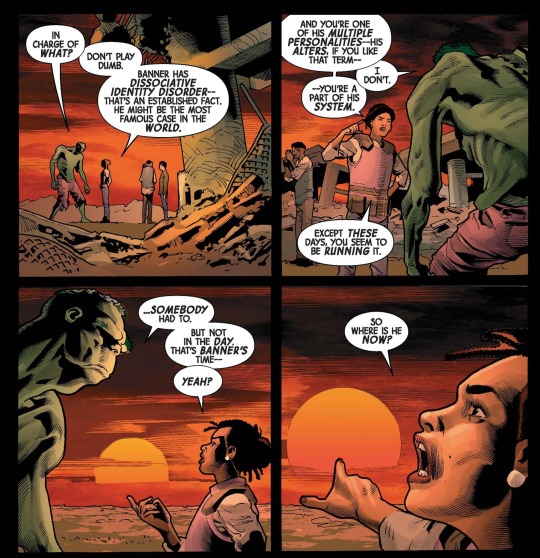
To me this is a very personal essay. I want to love the MCU as blindly as I did as a child. But I have found that the more source material I read. That harder that becomes. A character in Daredevil once said roughly ‘To love something is to forget what you don’t like about it.’ If that be true then I no longer hold this same love. I fortunately believe in a different idea, that love is something that people love to think is inherently blind. But in reality, the most complex loves are the wary ones. I love the Marvel Cinematic Universe, however I grow more and more wary of the cinematic universe as I grow more and more in love with the comics.
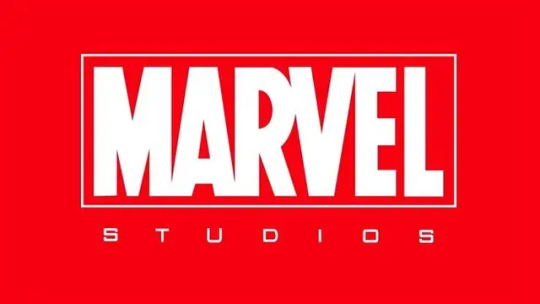
#marvel#comic marvel#comics#wiccan marvel#billy kaplan altman#billy maximoff#billy kaplan#william kaplan#peitro marvel#peitro maximoff#quicksilver#america#america chavez#doctor strange#young avengers#marvel cinematic universe#whitewashing#erasure#queer erasure#disability#disability erasure#hulk#bruce banner#the hulk#tw child abuse
17 notes
·
View notes
Text
youtube
Sometime in the 2000s, film students found a test for female representation in film and called it the Bechdel Test, so named for the cartoonist who wrote the comic the "test" first appears in. Back in 2013, Alison Bechdel has said that while she's glad mainstream culture is finally catching up to where Lesbian-Feminism was 30 years ago, she can't bring herself to keep relitigating the subject. 40 years out from the comic's creation, I have decided to take up that tiresome chore for myself. The way we talk about the Bechdel Test is incredibly flawed, and in this video essay I use examples ranging from the Shakespeare play Virginia Woolf referenced in A Room Of One's Own when she initially commented on this same phenomenon to the Marvel Cinematic Universe's failure to do right by their female characters.
If you like my writing and would like to toss me a couple of dollars on Ko-Fi it would go very far. I've been out of work since April and I'm trying on whether or not writing and filming this kind of work can be what I do to support myself- https://ko-fi.com/ophiewrites
ty to my best friend @alonglineofbread for doing the voices for Alison and Virginia I love youuuu
#ophie and kit#youtube#video essay#this essay is a break from my big project and it was very fun to write#bechdel test#dykes to watch out for#mo's movie measure#alison bechdel#feminist theory#those tags feel pretentious sorry ldkfjgd#Youtube
48 notes
·
View notes
Text
America Ferrera's breakthrough career
I just want to point out that this woman has delivered 2 cinematic, historical, browsing, impeccable speeches about the frustrations I feel about being a woman. And that actress of course is the one and only America Ferrera herself. Let's talk about her debut role in the movie — Real Women Have Curves. The 2002 independent film based on the play by Josefina Lopez is one of my all-time favourite movies I have watched in my lifetime. And if you somehow know this movie through another suspicious Greta Gerwig connection, I implore you to watch this. The movie was directed by Patricia Cardoso. At the time when it was released, America Ferrera had already filmed another movie but this movie debuted first putting her on the map. She was only 17 years old! Josefina López wrote the play when she was 18 years old. In 2019 it was the first Latina directed film to be included in the National Film Registry at the library of Congress. Taking inspiration from her real life, Josefina wrote Real Women Have Curves about Ana, mostly centered on her relationship with her mother Carmen, played by Lupe Ontiveros. This movie is touted, not only for its representation of women in their real bodies, it also delivered a warm and loving portrayal of Latina families and neighborhoods in Royal Heights and East Los Angeles. Again this isn't a time where Latinas, even today, are represented in a full and nuancent light. So to not only have this Latina family but to have them placed in East Los Angeles which has been criminally and stereotypically portrayed as "dangerous", really meant something and still means something today. And the message of that film being "there's so much more to me than my weight". I think this might serve as a comfort watch for many women around the world.
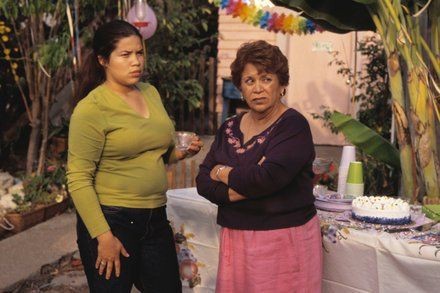
I don't understand how we were made to believe as children, that America Ferrera was the biggest woman to ever grace our tv screen. The Sisterhood Of The Traveling Pants is what I call perfection in cinema. If I ever will have a daughter in the future, she is required to watch this movie. Because every little girl needs to understand what sisterhood and what community is. I feel like girls today are not watching sisterhood displayed on television, or even in movies. It's always these toxic relationship, these toxic friendship — not to say that neither of those can't be toxic and bad, because even within this friend group they all have their own issues with each other, with their families etc. But it's not about the problems, it's how they solve them, how they come together. And I feel like this message should be displayed for the young girls today. And I just love how diverse the friend group is, because nowadays it seems like every teenager I see on tv are like the same skinny, white blondes. If you haven't seen this movie make sure to have a box of tissues nearby because it's going to make you cry.
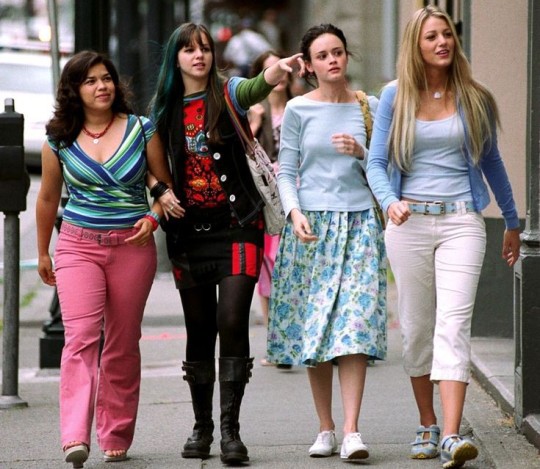
The dark side of pretty privilige is, you don't get to be funny, intelligent, respected — you just get to be pretty. So I've just finished watching Ugly Betty, I fully recommend, and I realised the only female character who's actually respected within this show, is Betty. If you don't already know the concept, Betty gets hired to be the assistant to the chief. Because he sleeps with his assistants, they decide to get him an "ugly" girl so he won't sleep with her. But she's hired for Mode, which is kind of like Vogue/Cosmo type of magazine. So naturally she gets bullied. They treat her like crap because she doesn't look like the ideal Mode girl. But the crazy thing is, since none of the men want to sleep with her, they actually respect her. They start to treat her like a human being with ideas. Then she becomes one of the most liked people by anyone in their team. On top of that, all of these gorgeous women get treated like absolute crap. No one listens to them, their ideas are not heard, and they're not respected. So it leaves a very clear message: wether you are gorgeous or "ugly", misogyny will still hunt you down and it will catch you. For Betty, men don't look twice her way. They treat her bad from the moment they see her. Just because they don't want to sleep with her, they don't find her attractive. For the beautiful women in the show, like Amanda who is painted as the gorgeous blonde, men only want to sleep with her, and they don't see that she's smart. Go back to watch the show and you'll see how horribly the other women get treated compared to Betty (and they have some good cameos in this show).

As we are reaching the end, we can claim America Ferrera as "that girl". The term is, in my opinion, used for anyone who dresses like a fashionista and acts like the queen they are. But it's much more than that. I think, to achieve that title you have to be also impactful and encourage other women to be what they want to be. America really proved it by playing the Emmy Award winning role of Gloria in Barbie, directed by Greta Gerwig. I think every cis, heterosexual white male should be forced to sit down and watch this movie. The message behind the Barbie movie is about going from being a girl to being a woman. Barbieland is what our childhood felt like; we were safe, naive, independent and everything seemed perfect. The real world is what womanhood actually is. It's scary, sexist, there's pain and we're faced with so many challenges, while still being held to unrealistic expectations by society. "We mothers stand still, so our daughters can look back to see how far they've become". America Ferrera's speech about how hard it is to be a woman, really affected me and made me tear up in the theather. "It is literally impossible to be a woman. You are so beautiful, and so smart, and it kills me that you don't think you're good enough. Like, we have to always be extraordinary, but somehow we're always doing it wrong. You have to be thin, but not too thin. And you can never say you want to be thin. You have to say you want to be healthy, but also you have to be thin. You have to have money, but you can't ask for money because that's crass. You have to be a boss, but you can't be mean. You have to lead, but you can't squash other people's ideas. You're supposed to love being a mother, but don't talk about your kids all the damn time. You have to be a career woman but also always be looking out for other people. You have to answer for men's bad behavior, which is insane, but if you point that out, you're accused of complaining. You're supposed to stay pretty for men, but not so pretty that you tempt them too much or that you threaten other women because you're supposed to be a part of the sisterhood." America Ferrera the woman you are, thank you so much for helping me and other women to believe in theirselves. Happy international women's day! <3
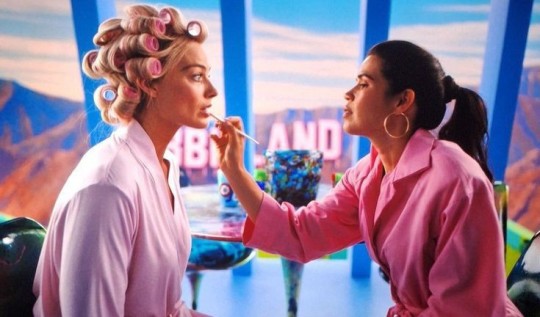
#america ferrera#barbie#real women have curves#the sisterhood of the traveling pants#ugly betty#feminism#womens history month#international women's day#margot robbie#greta gerwig#movies#history
26 notes
·
View notes
Text
Roundtable 2: We Are Lady Parts

We Are Lady Parts is a currently-running British sitcom following the formation of and development of a band named Lady Parts made up entirely of Muslim women. Upon its release, the series was met with a positive critical reception and lauded for its complex representations of Muslim women (it passed the Riz test with flying colors).
For the Roundtable, I analyzed the first episode of the show, titled “Play Something,” which depicts the band’s formation as Amina, a shy PhD student and guitar teacher, meets the struggling band “Lady Parts” and must attempt to overcome her crippling stage fright in order to join.
How does the series use dual-focus narrative as a strategic storytelling tool beyond heteronormative romantic pairings?
Beyond heteronormative romantic pairings, this episode employs a dual-focus narrative as a strategy for storytelling in its depictions of Amina and Lady Parts as two disparate yet intrinsically-tied entities. The show “Lady Parts” is a representation and exploration of coming of age for five Muslim women in their twenty-somethings. To borrow from Raymond Knapp in the reading from Robyn Stilwell, the show is “really about” self-assured-ness and confidence that comes from embracing the complexities that contribute to our identities. As such, the show explores this dual-focus narrative by placing Amina’s storyline in conversation with that of Lady Parts. The members of Lady Parts are funny, confident, punk, messy while Amina is painfully shy and struggling to express herself. This dual-focus is introduced in the first episode and continues to be fleshed out throughout the rest of the series. Because of this, the parallelism of the serialized dual-focus narrative of Lady Parts centers the emotional development of its female characters rather than heteronormative romantic pairing. This provides the series with space to flesh out the members of Lady Parts as one body and as individuals alike.
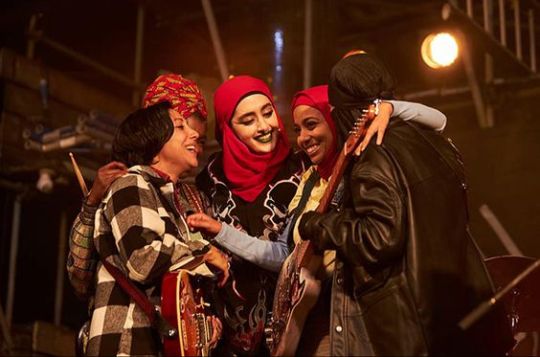
What are the “inevitable” couplings within the series and how are they accentuated through “cinematic” similarities and contrasts?
This episode opens on a scene in which Amina and her parents are meeting a potential suitor. It is here that we first see the complexities of her characterization as her parents begin to spill to her suitor and his conservative parents about Amina’s guitar skills and her stage fright which, according to her mother, “induces diarrhea and vomiting”, embarrassing Amina. Over voiceover from Amina, we learn that she has been on a self-motivated quest to find a husband – a quest that, per her admission, has been going “fairly disastrously”; however, through this scene, we are also introduced to her musical ability and personal struggle with performing. The scene concludes with voiceover narration, in which Amina says to the audience, “Little did I know things were about to change”.
This places Amina’s personal story within that of the preexisting body of Lady Parts and creates an “inevitable” coupling between the two storylines. Immediately following the scene introducing Amina, we are introduced to Lady Parts. The band is seen practicing one of their songs until one of the members, Saira, stops out of frustration, claiming, “We need a lead guitarist”. The group proceeds to discuss the merits of adding a fifth member to the band, eventually deciding to hold auditions for a lead guitarist.
This recalls and parallels the scene before. Throughout this first episode, “We Are Lady Parts” uses pacing to place the storylines of Amina and Lady Parts in conversation with one another. A scene from one storyline will be followed by a similar scene within the other storyline. This creates a tempo of inevitability which the dual-focus narrative follows until the end of the episode – when Amina and Lady Parts collide.
youtube
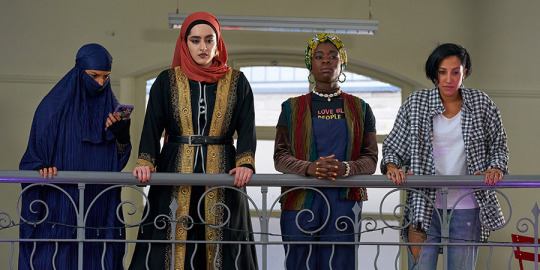
How does the series use musical numbers within and beyond the narrative world to replicate fairy tale, backstage, or folk musicals?
We Are Lady Parts uses its musical numbers to embody the traditions of the backstage musical while subverting it. The music is primarily diegetic and as such it is typically performed by Lady Parts. Through the use of music and performance, the audience is able to become familiarized with Lady Parts’ post-punk “sound”. Additionally, through musical performance, the series further characterizes the dynamics and tensions within the band and the individuals which make it up. Lady Parts doesn’t just fit itself neatly within the catalogue of preexisting backstage musicals, rather it takes influence from the traditional backstage musical while subverting it through its music and characterization. The songs in the show are funny and pointed, and through their punk sentiment, they challenge stereotypes and Western depictions of Muslim women.
youtube
youtube
15 notes
·
View notes
Text
youtube
The Fascination and Terror of Medusa: A Journey into Greek Mythology (Roman version)
Introduction to the Legend of Medusa
Medusa is one of the most fascinating and terrifying figures in Greek mythology. Known as one of the three Gorgons, Medusa is the only mortal among her sisters, Stheno and Euryale. Her most notable representation is that of a woman with snakes in place of hair, capable of turning anyone who meets her gaze to stone. The legend of Medusa has spanned centuries, influencing art, literature, and popular culture.
According to mythology, Medusa was not always a monstrous creature. Originally, she was a beautiful young woman, a priestess in the temple of Athena. However, her beauty attracted the attention of Poseidon, the god of the sea, who seduced her in the sacred temple. This sacrilegious act aroused Athena's wrath, who, to punish Medusa, transformed her into a monster. Her snake hair and petrifying power are the result of this transformation, which forever altered her fate.
Medusa is a complex figure rich in symbolism. On one hand, she represents beauty and innocence corrupted by violence; on the other, she embodies female power and vengeance. Her image has inspired numerous works of art, from ancient Greek amphorae to Renaissance paintings, and modern cinematic interpretations. Medusa continues to evoke interest and fear, remaining one of the most enigmatic and powerful figures in Greek mythology. Her legend is a powerful tale of transformation, punishment, and ultimately, resilience.

The Origins of Medusa
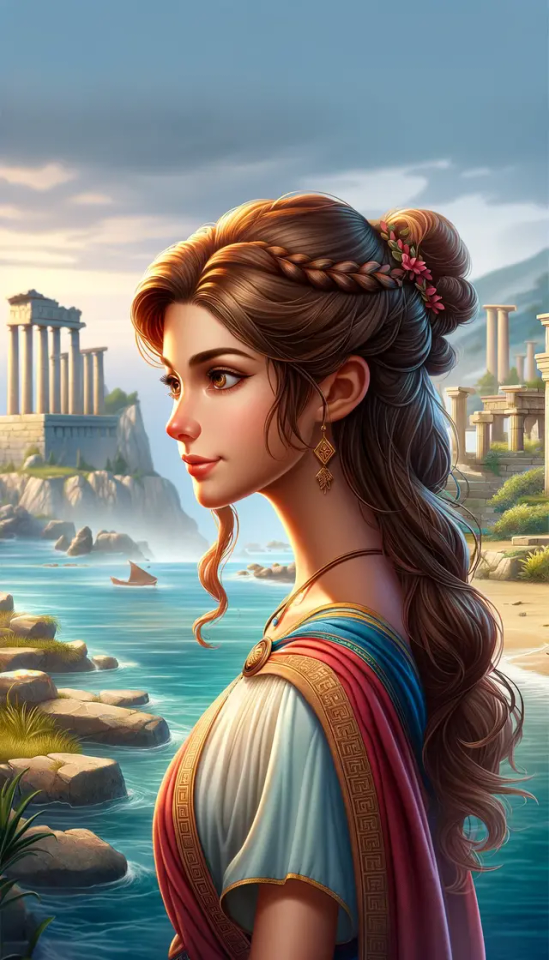
The origins of Medusa are deeply rooted in Greek mythology, where beauty and tragedy intertwine in a captivating and complex story. Initially, Medusa was not the monstrous creature everyone knows but a beautiful young woman known for her extraordinary beauty. She was one of the three Gorgons, daughters of the sea deities Phorcys and Ceto. Unlike her sisters Stheno and Euryale, who were immortal, Medusa was mortal.
Medusa became a priestess in the temple of Athena, the goddess of wisdom and war, requiring a vow of chastity and devotion. However, her life took a dramatic turn when Poseidon, irresistibly attracted by her beauty, seduced her in Athena's temple, an act of great sacrilege. Athena, furious at the desecration of her sanctuary, transformed Medusa into a monster. Her beautiful hair was turned into venomous snakes, and anyone who met her gaze would be immediately turned to stone. This radical transformation not only punished Medusa but isolated her from the world, making her a figure of terror.
Medusa's punishment can be interpreted in various ways. Some see Athena as a goddess who protected her temple and punished the violation of its sanctity. Others view the punishment as a symbol of divine anger and vengeance against corrupted innocence. Medusa's story reflects the complexities of relationships between mortals and gods, and the cruel irony of her fate continues to provoke discussions among scholars and mythology enthusiasts.
Despite her transformation into a monster, Medusa remains a tragic and captivating figure. Her story highlights universal themes of beauty, power, punishment, and redemption, making her one of the most intriguing figures in Greek mythology. Over the centuries, Medusa has become a powerful symbol, whose legend continues to inspire and frighten, representing an important chapter in the rich tapestry of Greek mythology.
The Transformation of Medusa: From Beautiful Priestess to Monster
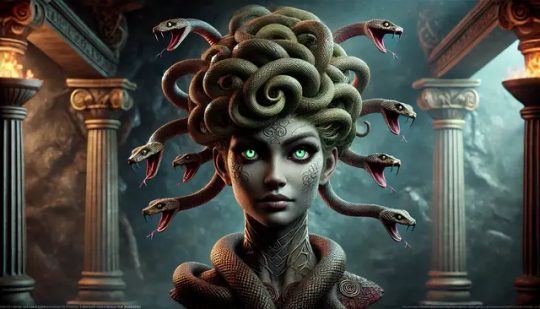
The transformation of Medusa from a beautiful priestess to a petrifying monster is one of the most famous metamorphoses in Greek mythology, laden with symbolic and moral meanings. Originally, Medusa was a beautiful young woman known for her extraordinary beauty. As a priestess of Athena, she was bound by a vow of chastity, devoutly serving the goddess of wisdom and war in her temple. Her life took a dramatic turn when she caught the attention of Poseidon, the god of the sea.
Poseidon, captivated by Medusa's beauty, seduced her in Athena's temple, a sacrilegious act that violated the sanctity of the place. Athena, enraged by the desecration of her temple, transformed Medusa into a monster, drastically altering her physical appearance and marking her future existence.
Medusa's metamorphosis was complete: her beautiful hair was turned into venomous snakes, and her gaze became so powerful that it could turn anyone to stone. This new aspect made Medusa a feared and isolated figure, relegated to the fringes of the known world. Her transformation is rich in symbolism: snakes, often associated with wisdom and rebirth, here become emblems of terror and death, while her petrifying gaze represents the paralyzing effect of fear.
This punishment can also be seen as a critique of female beauty and its perception in society. Medusa, once admired for her beauty, became a monster because of the very quality that made her special. The myth can be interpreted as a reflection on the fragility of beauty and its potential to provoke envy and destruction.
Despite her terrible transformation, Medusa remains a tragic figure, symbolizing corruptible beauty and the power of divine vengeance. Her story continues to be told and reinterpreted, an eternal reminder of the power of the Greek gods and the consequences of transgressions in their capricious and merciless world.
Medusa and Perseus: The Hero and the Monster
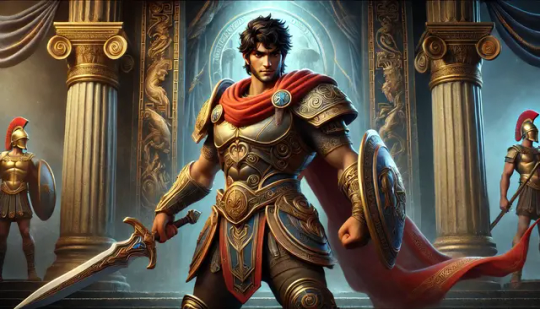
Medusa's story is inextricably linked with that of Perseus, one of the most famous heroes in Greek mythology. Their legend, rich in adventures and twists, tells of courage, cunning, and divine interventions, culminating in one of the most iconic battles between a hero and a monster.
Perseus was the son of Danae and Zeus, conceived under extraordinary circumstances. Danae had been imprisoned in a bronze tower by her father, Acrisius, king of Argos, due to a prophecy that foretold he would be killed by his grandson. However, Zeus, transforming into a shower of gold, reached Danae and made her the mother of Perseus. When Acrisius discovered his grandson's birth, he locked Danae and Perseus in a chest and cast them into the sea. The two survived and were taken in on the island of Seriphos.
Here, Perseus grew up to be a brave young man. His adventure began when the king of Seriphos, Polydectes, who was in love with Danae, sought to get rid of Perseus by sending him on an apparently impossible mission: to bring back the head of Medusa, the most fearsome of the Gorgons. Perseus accepted the challenge and received divine assistance for the task.
Athena and Hermes, the gods who protected heroes, provided Perseus with essential tools: a reflective shield, an adamantine sickle, winged sandals, a kibisis (a magical bag), and Hades' helm, which rendered him invisible. With these gifts, Perseus traveled to the land of the Gorgons.
Medusa lived with her sisters in a remote and inaccessible place. Perseus, using the reflective shield to avoid her petrifying gaze, approached Medusa while she slept and, with a precise stroke of the sickle, decapitated her. From Medusa's mortal wound sprang two extraordinary creatures: the winged horse Pegasus and the giant Chrysaor, symbols of beauty and power emerging from chaos and destruction.
Perseus not only succeeded in his mission but also used Medusa's head as a weapon, exploiting its petrifying power on numerous occasions. Eventually, he gave the head to Athena, who placed it on her shield, the aegis, as a symbol of protection and terror.
The story of Perseus and Medusa is rich in symbolic meanings. Perseus represents the archetypal hero, capable of overcoming impossible challenges through courage, cunning, and divine help. Medusa, on the other hand, embodies terror and corrupted beauty, a creature who, despite being a victim, becomes an instrument of destruction.
This legend continues to be an inexhaustible source of inspiration in culture, art, and literature, reminding us of the complex dynamics between heroes, monsters, and gods in the fascinating world of Greek mythology.

Symbolic Interpretations of Medusa
Medusa is a character steeped in symbolism, with interpretations varying over time and cultures. In Greek mythology, she represents divine punishment and the transformation from beauty to monstrosity, a reflection on the fragility of beauty and the destructive power of divinity. Her ability to petrify with her gaze can be seen as a metaphor for the paralyzing power of fear and terror. In psychological terms, Medusa can be interpreted as a symbol of repressed female power and vengeance. Carl Jung, the Swiss psychologist, saw Medusa as an archetype of the "terrifying mother" and female destructive power. In contemporary culture, Medusa is often revisited as an emblem of resilience and female strength, an icon of empowerment challenging traditional gender roles.
Medusa's Influence in Popular Culture
Medusa's influence in popular culture is vast and enduring, spanning literature, art, cinema, and fashion. In literature, she has appeared in works by authors such as Ovid and Dante, continuing to inspire contemporary writers. In art, her image has been immortalized by artists like Caravaggio and Rubens. Cinema and television have repeatedly revisited the myth of Medusa, with interpretations ranging from epic films like "Clash of the Titans" to TV series and video games. Fashion has adopted Medusa's iconography, with the brand Versace using her head as its logo, symbolizing beauty, power, and mystery. Medusa continues to be a powerful cultural symbol, capable of evoking strong emotions and stimulating deep reflections on human nature and society.
#athena#cultural influence#Gorgons#Greek Mythology#medusa#Perseus#Poseidon#symbolism#mythology#youtube#digital art#fantasy#videos#folklore#mythical creatures#Youtube
8 notes
·
View notes
Text
Mortal Kombat's Sexualized Approach to Character Design
BLOG 7: Exoticism and Sexualization in Game Media
I turned to Mortal Kombat as a surprising and comforting release for my pent-up frustrations during the turbulent times of my adolescence. I found a therapeutic release from the difficulties and rage that surrounded me in the visceral world of fatalities and brutalities. I had no idea that beneath the surface of this legendary game was a rich tapestry of themes that I would not fully comprehend until much later.
I didn't start looking at the Mortal Kombat characters through a different lens until we got to talking about exoticism and sexualization. The very characters I controlled on screen, delivering vicious finishes, abruptly transcended the status of avatars and became representations of a widespread cultural phenomenon. This insight led me to set out on an investigative quest to analyze the complex interactions between exoticism and sexualization in the framework of a game that served as both a significant source of entertainment and a turning point in my coming-of-age story.

About Mortal Kombat
The 1992 arcade game Mortal Kombat, created by Ed Boon and John Tobias, introduced a revolutionary fusion of martial arts, fantasy, and digital graphics. Its popularity made way for more entries, ensuring its place in the gaming industry as a flagship franchise.
Mortal Kombat changed as time went on, embracing new storytelling techniques and technological breakthroughs. A pixelated fight turned into a cinematic experience with deep character arcs and narratives that drew players in and kept them interested beyond the boundaries of a normal fighting game.
Academic Standpoint
For a number of decades, academic discourse has focused on the intersection of gender representation and media, especially in the context of video games. The criticism of media representations that sexually objectify women has its origins in the 1970s, as Busby (1975) and other scholars have pointed out. (Ward, 2016)
Different definitions of sexual objectification have been offered within this scholarly framework. It explores the division of bodies, body parts, or sexual functions from one's identity and goes beyond the simple visual depiction of individuals. Sexual objectification reduces people to being nothing more than tools, existing mainly for the enjoyment and use of other people. Treating people as though their bodies are the only thing that can truly represent them is part of this dehumanizing process. (Ward, 2016)
Examining current beauty standards is an important part of the conversation about sexual objectification. According to research, there are certain standards of beauty for women in relation to American men. These standards frequently dictate a particular body type, such as slender and short or rounded and curved. The idealized female form consists of a bell-shaped lower torso, rounded arms, sloping shoulders, and a small waist tucked between a rounded bosom. The extremities are also examined, including the small, delicate feet and the hands with tapering fingers. The idealized complexion is described as white, and if colored, it may occasionally have a pink flush to the cheeks. (Mazur, 1986)
Character Case Studies
The case study is only focusing on women being sexualized in the game. It is not suggesting that women are the only characters which are sexualized in the game, it could be otherwise, and the data related to it will be absent in this post.



Just for the sake of this study we are going to consider three characters, namely Mileena, Kitana and Jade from Mortal Kombat.
The physical allure of Kitana, Jade, and Mileena adheres gracefully to conventional beauty standards, characterized by a fair or wheat-ish complexion and a harmonious balance between a slender, muscular physique. Each character embodies the timeless elegance of a bell-shaped lower torso, complemented by wider hips and a gracefully narrow waist, effectively encapsulating a universally accepted archetype of femininity. Their statuesque height further refines their curves, seamlessly harmonizing with established beauty norms.
Kitana, Jade, and Mileena's wardrobe choices are always form-fitting garments that skillfully draw attention to their figures' contours, combining martial skill with appealing beauty. Their purposeful use of form-fitting apparel draws attention to their defined curves and muscularity. The purposefully crafted costumes with well-placed openings that reveal skin with a deft artistic touch are what really catch the eye. The characters' visual appeal is enhanced by the meticulous creation, which also plays a significant role in the exoticization and sexualization of the characters by skillfully fusing sensuality into their combat personas. It's important to note how their wardrobe has changed over time, with some costumes gradually baring more skin, demonstrating the franchise's flexibility in response to shifting fashion trends and cultural quirks.
Conclusion
The Mortal Kombat characters Kitana, Jade, and Mileena represent a fascinating blend of conscious design choices and traditional beauty standards in the game's intricate weaving. Their pale skin tones, toned bodies, and balanced outlines capture both the traditional values and the changing aesthetic of the Mortal Kombat world. Beyond simple combat aesthetics, the deft combination of form-fitting clothing and well-placed gaps in their costumes reveals a complex interaction between exoticization and sexualization. As the characters' looks change over time, Mortal Kombat transforms into a dynamic canvas that adapts to shifting beauty standards and cultural quirks. Past the deaths and violence is a space for gaming, introspection, and scholarly conversation that provides an in-depth examination of societal narratives, identity, and representation in the gaming industry.
References
Ward, L.M. (2016) 'Media and Sexualization: State of Empirical Research, 1995–2015,' Journal of Sex Research, 53(4–5), pp. 560–577. https://doi.org/10.1080/00224499.2016.1142496.
Mazur, A. (1986) 'U.S. trends in feminine beauty and overadaptation,' Journal of Sex Research, 22(3), pp. 281–303. https://doi.org/10.1080/00224498609551309.
#pc games#game#game art#game design#game theory#video games#gaming#videogame#gamers#fighting games#mortal kombat#jade#kitana#mortal kombat 1#mileena#character design#character art#fashion#sexualization#exoticism#game studies
17 notes
·
View notes
Note
don't you love when characters are completely stripped from every trait that made them so likeable just for a love interest and to try to paint awful people (hydra/Peggy TVA and illuminati) like they're the good ones? Isn't it awesome? And also inclusion points to Marvel because the love interest thing used to happen only to female characters, but now Steve, Loki and Stephen are part of it too 🥰

I'm not watching it either. I've been told it's better than the first one but at this point I don't want to touch Marvel with a ten-foot pole.
Loki is tortured, imprisoned, and emotionally abused. But Sylvie is a good girl.
Bucky has to make amends but the TVA agents are good guys and according to Wright, the TVA is SHIELD. Not Hydra, no. It's SHIELD.
Stephen is the only threat to the multiverse and Thanos was his fault and he's a villain... but the Illuminati are the good guys.
Loki's past and his characterization? In the trash. Stephen's sacrifices and lessons learned? Ignored. Steve's morality and legacy? Given to a woman who tarnishes it and doesn't deserve it while Sam is ignored.
We can add Wanda here too. One of the most complex characters in Marvel uttering "muh kids, muh kids" every two minutes in MoM.
What is happening?! Are Marvel even aware that they're a superhero cinematic universe? That the whole point of these movies/series is to take the side of the heroes and fight the system, especially when it's corrupted? They can pretend it's "inclusivity" and "representation" what's drowning them, but it's not that. These stories make no sense. They're ruining their characters.
#mcu critical#mcu salt#you'd think having three favourite characters would mean statistically at least one of them would be treated right...#but they ruined all three for me!!#how does that even work...#and Waldron is writing the next two Avengers movies... I just can't#do I laugh or do I cry
17 notes
·
View notes
Text
Explorations of Semiotics and Structuralism in 'Take On Me' and 'She Likes a Boy'
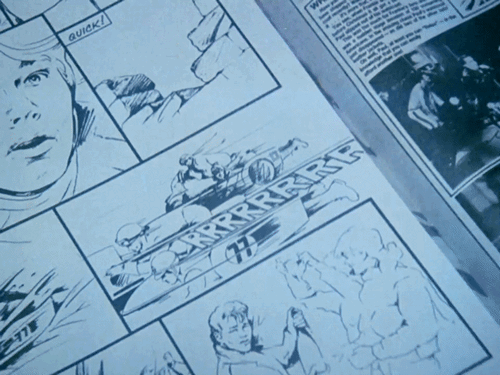
Take On Me
‘Take On Me’ details the epic love story of a man chasing after his dear love, culminating in a moment of passion when the two finally meet, only for the man to leave again. It’s a cute story with tinges of melancholy thanks to the yearning nature and the idea of ‘right person, wrong time.’ Right? Well, that’s what the music video would have you think. Simply looking at the lyrics, which tell of a man consistently pursuing a woman, believing her to be his one true love, trend more towards stalker behavior. It seems this piece of iconic culture is another in a long line of problematic romance that is portrayed as perfectly normal and, in fact, romantic. But why? The answer lies in the signs.
According to Saussure, the sign is made up of a signifier—the sound-image—and a signified—the concept.[1] Here, the signifier is the lyrics that are sung and the signified is ‘love’ or ‘romantic relationships.’ For ‘Take On Me,’ the signified and signifier are unified by the sign that is created during the synthesis of the two: the music video. The concept described in the lyrics is visualized in the music video through a fantastical, reality-breaking story where the narrator of the song pulls the girl he loves into the pages he exists within, then eventually finds her in the real world after she leaves the 2D world. Due to the signifiers utilized in the music video, the audience interprets the entire song and its concept as a positive representation of love rather than the problematic stalker-coded story that is so prevalent in media.
The signifiers in the music video—the sign—point to the mythologization of ‘Take On Me,’ as Barthes describes a myth as a sign becoming a signifier of something else.[2] Barthes also says that mythical signification is “never arbitrary”,[3] so what does that tell us about ‘Take On Me?’ If the reason behind the music video misconstruing the concept and lyrics to create the image of a healthy romantic relationship is motivated by something, what exactly clues us into the motivation?
Metz dictates in “Some Points in the Semiotics of Cinema” that because of cultural or specialized codes that are embedded in our society’s collective understanding, some visuals have implications for the viewer and will be interpreted in a certain way before the cinematic language can tell the viewer what the connotation—and the related denotation—should be.[4] The ‘Take On Me’ music video draws on romance tropes, settings and characters that are extremely prevalent in our cultural understanding of the concept of ‘love’ or ‘romantic relationships’ in a way that evokes a feeling of positive association with the sign. The aesthetic of the diner, a classic date spot, and the plot thread about the straight-laced female love interest being—literally—pulled into the dangerous world of the bad boy are tropes that generate an association with love and romance such that the audience has an idea of what the music video is about before they even watch all of it.
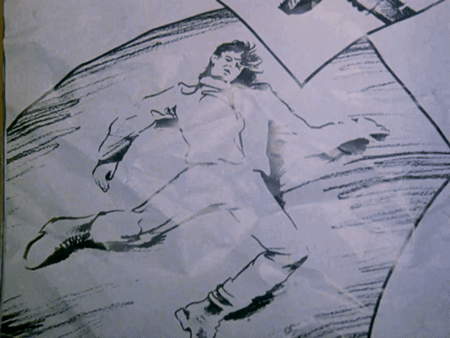
This positive association prevents the audience from interpreting the sign through its signifier, the lyrics. The connotation that the sign evokes through the mythologization the music video participates in is one of a happily ever after romance, but the denotation—the relationship between the concept of love and the lyrics that describe stalker-ish behavior—is one that reveals that the love story between the narrator of the song and the love interest is maybe not so cute.
She Likes a Boy
‘She Likes a Boy’ has a similar concept to ‘Take On Me’ in that they both focus on love and the romantic relationships that ensue from people being in love. But ‘She Likes a Boy’ focuses on the unrequited love, one that is born from a queer person falling for their straight friend—ironically, a trope that has emerged within the canon of queer storytelling. At least, this trope is what the music video posits the song to be about; again, the lyrics and associated concept can be interpreted differently without the music video as a sign to guide the audience towards a particular understanding.
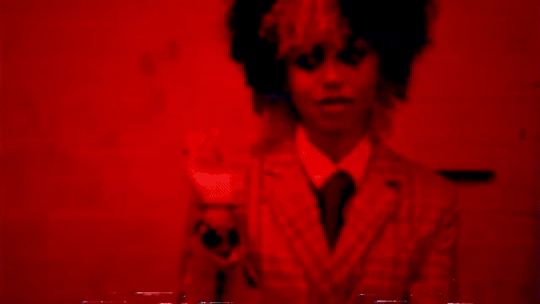
The song was initially released as a single on January 12 in 2024 (though the artist Nxdia released a snippet of the song on TikTok in late 2023), with the music video not arriving until nearly a month later on February 14. This gap gave listeners ample time to interpret the lyrics as they saw fit. Several interpretations match up to the music video’s representation of the signified and signifier as a whole, with lesbians and others that like women lamenting the pain of falling for a straight person, while other videos touch on the insecurity that butch and masc lesbians feel due to presenting more masculine. But due to the “correct” interpretation not being laid out by the music video, other queer people were able to make meaning out of the signifier and signified that completely deviated from the original narrative.
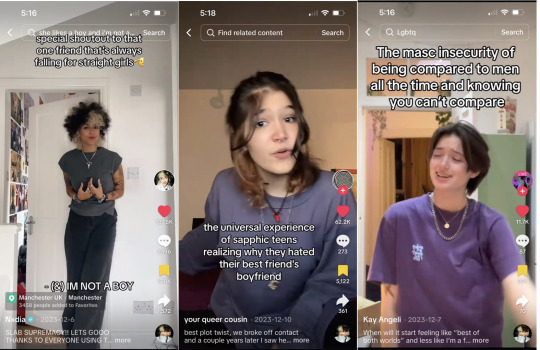
Some transgender men felt they could relate to the song as it described the gender dysphoria they experience on a day to day basis. Hence: how could a girl like me if I’m not a ‘real boy?’ Nonbinary and gender non-conforming folk might interpret the lyrics ‘I’m not a boy’ as ‘I’m not a boy but I’m not a girl either.’ That interpretation encapsulates the experience of people who don’t fall into the categories of the gender binary and as a result don’t know who will love them for themselves. These interpretations were a result of the signifier and signified not being associated with a specific sign due to the music video not guiding viewers and listeners into that line of thinking. Saussure would call this a result of the “arbitrary nature” of the sign, with value and meaning being assigned to signifier/signified relationships nearly at random.[5]
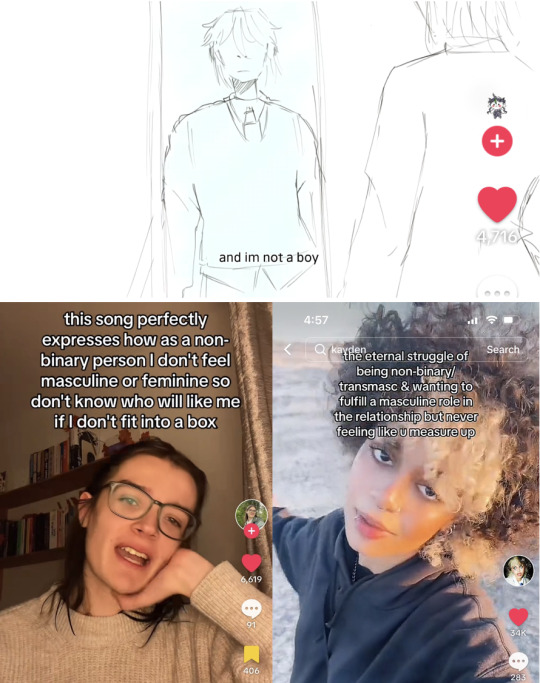
The random nature of the sign’s meaning is at odds with the values assigned to the signified and signifiers within the music video itself. The myth of ‘She Likes a Boy’ is extremely apparent when applying Barthes’ conclusions from “The Great Family of Man.” In that particular essay, Barthes describes how the idealization of our history decreases its value; our past is relegated to something so poetic that it hardly matches up to our current reality.[6] The ‘ideal past’ becomes a signifier for what our life should be, but our actual lives—the signified—isn’t represented by that idealized version.
Something like this happens in ‘She Likes a Boy.’ Nxdia compares themselves to the boy their friend likes, trying to show that there is so little difference between them. The cinematography of the music video also compares the two, with parallel shots used to compare Nxdia and the boy that the girl likes. By highlighting the comparisons, the music video signals to the viewer the idealized reality that Nxdia wants to live in, one where by being comparable to a boy, the girl they like will like them back. But the cinematography also uses lighting in a clever way to distinguish between the idealized reality and the actual life that Nxdia is living. It shows Nxdia playing into the ideal heteronormative romance despite being a queer person, which further complicates the concept of 'love' and 'romantic relationships' in the context of the song.
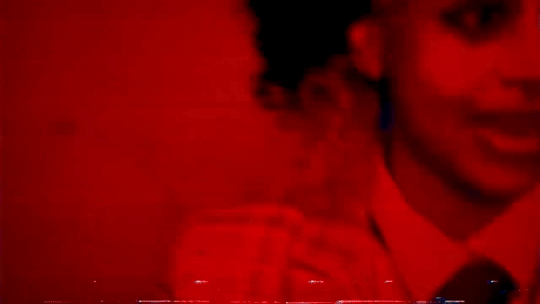
The disparity between signifier and signified is similar to the differing interpretations of the sign by listeners before the music video was released. It seems Saussure’s postulation about the arbitrary nature of the sign was entirely correct; the meaning we assign to the sign is entirely dependent on the associations we have with the sign, its signifier and its signified.[7] From this, we can deduce that there is no correct way to interpret a sign, unless the sign has become a myth in its own right.
Discussion Questions:
How does the presence of two worlds (the world in the drawing and the real world) in 'Take On Me' create layers of myth?
Why might the creators of the 'Take On Me' music video want the love story to be perceived as its connotation (happy and healthy) rather than as its denotation (the stalker behavior lyrics)?
Does the arbitrary nature of the sign add to or subtract from the meaning different listeners assigned to the 'She Likes a Boy' music video?
Is there an inherent 'correctness' to the interpretation of the lyrics to 'She Likes a Boy' based on the fact that the music video outlines one such interpretation?
Works Cited:
Barthes, Roland. “Myth Today” and “The Great Family of Man.” In Mythologies, 100-102 and 106-126. Translated by Annette Lavers. New York: The Noonday Press, 1957.
Metz, Christian. “Some Points in the Semiotics of Cinema.” In Film Theory and Criticism, 65-77. Edited by Leo Braudy and Marshall Cohen. New York/Oxford: Oxford University Press, 2009.
Saussure, Ferdinand de. Course in General Linguistics. Edited by Charles Bally, Albert Sechehaye and Albert Rledlinger. Translated by Wade Baskin. New York/Toronto/London: McGraw-Hill Book Company, 1916.
[1] Saussure
[2] Barthes, Myth Today
[3] Barthes, Myth Today
[4] Metz
[5] Saussure
[6] Barthes, The Great History of Man
[7] Saussure
@theuncannyprofessoro
11 notes
·
View notes
Text
Vampire Diaries, Blood Brothers (S1, E20): Panel Presentation
Stefan Feeds On His Dad's Blood (Flashback) - The Vampire Diaries 1x20 Scene

Episode’s Connection to Reading:
In her article “Growing up in Magical Time: Representations of Female Growth and Development in ABC’s Once Upon a Time”, one of the episodes from Once Upon a Time that Katherine Whitehurst focuses is“The Stable Boy” (season 1, episode 18) and “The Queen is Dead” (season 2, episode 15). This episode uses flashbacks to highlight the character development of the Evil Queen. In “The Stable Boy” we see how Regina went from being a compassionate young woman to the path that ultimately resulted in her being the Evil Queen. Whitehurst argues that “Regina’s inability to cope with loss and put the needs of others above her own separates her from Snow White and the “good” characteristics Snow White embodies” (Whitehurst, 10). In the Vampire Diaries episode “Blood Brothers”, the viewer sees through Stefan’s vampire origin story, which paints Stefan as the original bad brother. He becomes a vampire after accidentally killing his father and tasting the blood. He then forces Damon to become a vampire as well. This contrasts with his sympathetic representation in the present-day storyline, where he is feeling guilty for drinking Amber’s blood. Whitehurst writes, “In juxtaposing Regina’s history with her villainy in the serial storyline, the program expands her story and complicates her character, creating a sympathetic and emotionally complex figure who is both victim and villain” (Whitehurst, 10). In showing Stefan’s backstory, the audience comes to view him as both victim and villain, too.
Statement:
How does the series' form and content inform the relationship of female physical and emotional growth and development?
Over the course of The Vampire Diaries, Bonnie and Caroline are examples of female characters that undergo growth and development. In the first episode, Bonnie says that her grandmother told her that she was a witch. Bonnie doesn’t believe it at first, and doesn't know how to use her magical powers, but by the sixth episode, she understands that she does have power. Her grandmother teaches her how to use her powers, similar to Snow White’s story. When her grandmother dies, Bonnie must practice and continue her education on her own. As the show progresses, Bonnie becomes more and more powerful and is constantly using her power to save the day. In the final episode of the series, Bonnie saves the entire town by moving a huge hellfire away from the town and sending it back to hell where it originated.
Caroline starts off as a preppy barbie who is incredibly shallow. After turning into a vampire at the beginning of season 2, she will no longer age for the rest of the series, an example of a mismatch between a character’s chronological and physical age. She eventually becomes a much more developed character, and becomes increasingly loyal. She becomes a strong team player, keeping morale up and helping others, a major shift from the self-absorbed character that she was at the beginning. She even mystically becomes the surrogate for another character’s twin babies, and as a loyal friend, she carries the babies to term and becomes the first vampire to give birth.
In what ways does the series use cinematic timing to chronicle character transformations?
The series uses a series of flashbacks to provide context and to show how much characters’ lives have changed. These flashbacks provide more information on Stefan and Damon in the past, and help to tie together the past and the present. In season 7, there are a few episodes that begin with a flash forward to three years in the future which show how things have changed. There is one episode in season 3 in which they are trying to solve murders and there is a flashback to 1912 that reminds Damon of what had happened decades earlier. The flashback helps Damon and Stefan realize that there was a confession, which ultimately helps them to solve the current murder.
How are the primary characters' ages and development coded by the characters around them?
At the beginning of the series, the majority of the main characters are juniors in high school, and everyone else’s ages are based on that. These characters are supposed to be youthful and oblivious to the presence of vampires in their town, unlike their parents who know exactly what’s happening. The only exception to this is Elena and Jeremy’s aunt Jenna, who is younger than the rest of the guardians and is seen as less put together than them. Jeremy, who’s only a year younger than Elena and her classmates, is seen as incredibly immature, which is evidenced when Vicki doesn’t want to let everyone know that she and Jeremy slept together because she’s older than him. Damon is several years older than Stefan is. Matt is the most mature as he has to get a job so he can pay bills. His mom is immature compared to him, which is evident when she makes out with his best friend.
As the show progresses, these high school students who are the main characters go to college and become exposed to the supernatural element of the town. Exposure to the vampires and other supernatural creatures forces them to mature as they must navigate dangerous situations to survive.
Vampires don’t age physically. But as they become older chronologically, they become more experienced and their powers get stronger. As a result, other characters perceive vampires based on their actual age not the age they appear. This results in a dichotomy between their appearance and the way in which other characters perceive them. For instance, Katherine is 500 years old and the other characters are afraid of her and her powers. The Originals, a group of vampires who are all 1000 years old, are considered particularly fearsome. Klaus is the most feared of all vampires and is described as “the oldest vampire in the history of time.”
In what ways does the series reflect narratives of youth represent narratives’ adult functionality or dysfunctionality?
Katherine was shown as a human The show has a few flashback scenes that show the lives of certain vampires when they were human, before they became vampires. The show shows Katherine as always putting her own needs first. Katherine met Klaus and was friends with him. She learns that he needs her blood for a ritual that will reactivate his werewolf side. To do this, he would need to drink all of her blood. Katherine tries to escape and a vampire named Trevor tries to help her. He tells her to go to a specific place and they’ll take care of you. The family wants to give her back to Klaus, but she’s hurt and Rose heals her with Rose’s blood because vampire blood heals. Katherine kills herself because if you die with vampire blood in your body, you transition. Klaus needs her to be human. By turning herself into a vampire, she thwarts Klaus, who needs her to be human, but puts Trevor and Rose in danger. Trevor and Rose must run from Klaus for years after this. As a vampire, Katherine continues to use others for her own needs. At one point, she puts her soul into Elena’s body to avoid dying.
How does the series use the fantasy genre as an area for framing virtue and villainy?
The Vampire Diaries uses the fantasy genre for framing virtue and villainy by having the humans represent virtue and innocence and the vampires, werewolves, hybrids, travelers, and Heretics be the villains. The vampires have a switch in their brain that allows them to turn off their “humanity.” This is when they are at their deadliest. They also require blood to survive and are not above killing humans to get it, even when their humanity is on. Throughout the seasons, additional types of nonhuman creatures are introduced and they are consistently portrayed as villains. Hybrids that represent a mixture of two types of villainous creatures are even more dangerous. The show is a good example of “othering” as it portrays creatures other than humans as evil and malicious. The many different types of nonhuman characters have the capacity to murder humans.
Critical Thinking Questions
What is the impact on the viewer when actors are clearly not the age of the character they are playing?
What emotional impact can be achieved by telling stories in a non chronological way and how can this be even more impactful than telling the story chronologically?
Whitehurst writes about “framing the ideal female as self-sacrificial and benevolent,” are female characters presented in stories as valuable only to the extent that they put others’ needs before their own?
Is it easy to “other” creatures that are not human such as vampires and werewolves? Do you perceive instances in which, as Whitehurst implies, women are “othered” because they have normal human emotions.
17 notes
·
View notes
Text
Star Vs. the Forces of Evil

The series, Star Vs. the Forces of Evil is a cartoon that follows the main character, Star Butterfly, as she discovers how she wants to rule the dimension of Mewni. She is so excited to finally get her wand but quickly realizes that it might not be everything she dreamed it would be. She struggles to discover how she can best utilize her powers in a way that she feels progressively helps everyone while still trying to have fun and enjoy her teenage years. In the article “Growing Up in a Magical Time: Representations of Female Growth and Development in ABC's Once Upon a Time,” Whitehurst argues against the idea that there is an ideal timeline for emotional maturing, but rather a more fluid connection between female growth and development. Star Vs. the Forces of Evil also challenges the idea that there is one right way to exist and grow, particularly with how Star goes about approaching her transition from princess to queen.
youtube
How does the series form and content inform the relationship of female physical and emotional growth and development?
The series is a cartoon which is typically portrayed as a childish form of media. This is mirrored by how Star is portrayed as being unworthy and too immature to become queen. When put in a powerful position after she finally receives her long-awaited magical wand, her ability is constantly questioned by those around her, including her own mother. The villains in the show also try to take advantage of her as they assume that she is weak and incapable of defending herself. While Star has a fun-loving personality and does find herself in dangerous situations that she must get herself out of, she continues to prove herself as a force to be reckoned with. Towards the beginning of the series, Star’s optimistic outlook on life is portrayed as a weakness that makes her seem irresponsible and reckless, but as she moves through the series Star gets more opportunities to embrace her open-mindedness and positivity to help fuel her understanding of herself, her connections with others, and her goals for the future. She is initially more restrained in the royal context, but through exploring her individuality, she is able to find ways to incorporate it into her royal status as well.
In what ways does the series use cinematic timing to chronicle character transformations?
youtube
youtube
In the series, Star struggles with controlling her powers but situationally pulls through when she is needed most. In the first example from the beginning of the series, Star locks Marcos, her best friend, in the closet with her wand. The only way to help him escape is by harnessing her magic without her wand, something she has been unable to do previously in the season. She spends the whole day working on helping Marcos, but it is not until this random, and emotionally triggering, situation that she is finally able to “dip down” to harness her powers. The repeated examples from later in the series showcase her growth in not only the strength of her magic but her ability to control it in high-stress environments. The stakes of the instances continue to increase throughout the series, but Star is able to channel her powers more purposefully.
How are the primary characters' ages and development coded by the characters around them?
As previously mentioned, Star is seen as immature by those around her, however, this depiction of her occurs more while she is at Mewni, her home dimension, than it happens on Earth. On Mewni she is constantly being compared to her mother and other past queens who have made big contributions while on the throne. This makes Star seem lesser in comparison, but mainly because she is just at the beginning of her royal journey. On Mewni she is also mainly surrounded by older individuals and there are fewer people her age that she can interact with on a regular basis. Star is constantly forced into situations where she needs to act older than she is and is expected to grow up at a faster rate since she is heir to the throne. While this can be exciting, it also puts a lot of pressure on her and limits her ability to explore a youthful lifestyle. While on Earth, however, Star is surrounded by a lot more people her age. In this context, she is able to be appreciated for more than her status, and her teenage tendencies are seen as normal rather than something limiting her.
In what ways does the series reflect narratives of youth represent narratives of adult functionality or dysfunctionality?
youtube
Star is this fun loving individual and is very appreciative of life because of this, but her mom, at least at the beginning of the series, is overly focused on following the book and being seen as perfect or proper. This is because Moon, her mother, thought being strong and flawless was what the people needed, and was confined by what it meant to act like a queen and the responsibilities of monarchy. She is hard on Star because Star doesn’t act the way Moon believes queens should act. This limited Moon's ability to inflict change because she was scared of the repercussions, but Star was bold enough to try. Star questions traditions because she is willing to learn and listen. If she had restricted herself to be this picture-perfect queen, like her mother did, she never would have thought to challenge traditional practices and fight for change. The clip I picked showcases how while the adults from Mewni were too caught in their ways, the younger generation of kids were able to look past their differences and enjoy playing the first integrated game of Cornball together.
How does the series use the fantasy genre as an area for framing virtue and villainy?
youtube
(stop at 2:45)
Star Vs. the Forces of Evil, is filled with demons and monsters but forces viewers to question the typical depiction of them. Throughout the series, the monsters and demons are portrayed as evil because of their physical appearances without being given the chance to prove themselves or listen to the full story. This series takes the connotations and implicit views of monsters being evil and humans being the victims, but shows how these depictions were wrongfully portrayed in this universe. The series continually plays with the connotations of what it means to be a monster versus a human and highlights the bias of narration and the importance of being open-minded and listening to both sides of the story. This clip showcases instances where the Mewmans assume the monsters had harmful intentions before the monsters had the chance to defend themselves. The blatant inconsistency with how the monsters and Mewmans were treated, highlights the continual bias against the monsters for merely existing simultaneously with the Mewmans.
----------
How can the absorption of fantasy genres help women deal with the constant expectations they face in modern society?
How can seeing simultaneously imperfect and powerful women impact younger generations
How can role models in the media portray how our own biases and standards get passed down through generations?
How does the separation of a fantasy world allow authors/creators to talk about the expectations women face in the real world?
@theuncannyprofessoro
11 notes
·
View notes
Text

Iconic Underwear Scene: Sigourney Weaver's Empowerment in "Alien" 👽🚀
Sigourney Weaver's underwear scene in "Alien" is a pivotal moment in both the film and the history of science fiction cinema. Released in 1979 and directed by Ridley Scott, "Alien" broke new ground in the sci-fi genre with its intense atmosphere, groundbreaking visual effects, and strong, complex female protagonist in the form of Ellen Ripley, played by Sigourney Weaver. The scene in question occurs midway through the film when Ripley, the last surviving crew member of the spaceship Nostromo, prepares to confront the deadly extraterrestrial creature that has been terrorizing her and her fellow crewmates. 🌌
At this point in the narrative, Ripley is alone and vulnerable, having narrowly escaped the alien's clutches on several occasions. As she gears up for her final showdown with the creature, she strips down to her underwear, a moment that has been both celebrated and critiqued by audiences and critics alike. On one hand, the scene has been praised for its subversion of traditional gender roles in science fiction, as Ripley takes control of her own narrative and asserts her strength and agency in a genre that often marginalizes or objectifies female characters. By presenting Ripley as a capable, resourceful survivor who is unafraid to confront danger head-on, "Alien" challenges the stereotypical portrayal of women as helpless victims in need of rescue. 💪
However, the scene has also been subject to criticism for its apparent gratuitousness and sexualization of Ripley's character. Some viewers have argued that the decision to have Ripley undress in this moment serves no narrative purpose and exists solely to titillate the audience, reducing her to a sexual object rather than a fully realized character. Additionally, the choice to depict Ripley in her underwear has been seen as a reflection of the male gaze prevalent in Hollywood filmmaking, catering to the presumed desires of the predominantly male audience at the expense of authentic representation of female experiences. 🎬
Despite these criticisms, it is important to consider the context in which "Alien" was made and the broader cultural landscape of the late 1970s. At a time when women's roles in film were often limited to supportive or decorative roles, "Alien" stood out for its portrayal of a strong, independent female protagonist who refuses to be defined by her gender. Sigourney Weaver's performance as Ripley remains iconic to this day, inspiring generations of viewers and filmmakers alike. 🌟
In conclusion, Sigourney Weaver's underwear scene in "Alien" is a complex and controversial moment in cinematic history, reflecting both the progress and limitations of representation in science fiction cinema. While it can be seen as a powerful assertion of female agency and resilience, it also raises important questions about the male gaze and the objectification of women on screen. Ultimately, "Alien" and its portrayal of Ripley continue to provoke discussion and debate, reminding us of the ongoing need for diverse and authentic representation in popular media. 🎥✨
#sci fi#science fiction#alien#ellen ripley#sigourney weaver#underwear scene#hot scene#gender roles#empowerment#polemica#cult movies#cult movie scene#iconic scene
6 notes
·
View notes
Text
ATLA Panel Presentation

Within the article “Growing up in Magical Time: Representations of Female Growth and Development in ABC’s Once Upon a Time,” Katherine Whitehurst’s discussion of female character growth in Once Upon a Time is relevant to the fantasy series Avatar the Last Airbender (2005). According to Whitehurst, this growth presents itself both through the fluidity of time and the focus on magic as a power harnessed for good or evil. Once Upon a Time is non-linear in its storytelling—including frequent flashbacks to younger versions of the main characters. For Whitehurst’s purposes, she focuses mainly on the evil queen and snow white, examining how flashbacks establish the origin story of these characters' current identities and relationship to one another. One episode from ATLA that uses this technique is “The Southern Raiders,” where one of the protagonists, Katara, goes on a mission to find the man who killed her mother, who she knows to be a Fire Nation soldier. Throughout the episode, scenes transition between Katara in the present time being overcome with rage as she tries to locate the soldier (lashing out at the other characters and using bloodbending—a dark, twisted version of water bending) and Katara as a little girl on the day her mother died. Whitehurst argues that “In juxtaposing Regina’s history with her villainy in the serial storyline, the program expands her story and complicates her character” (Whitehurst, 10). Since Katara is seen as a protagonist and a general force for good in the show unlike Regina, it is not her villainy that is being explained and complicated so much as her vengeful desires.

Clip
How does the series form and content inform the relationship of female physical and emotional growth and development?
Avatar the Last Airbender is a relatively short series. It is three seasons, each with around twenty episodes that are twenty minutes long. This shortform demands intentionality with every scene and requires that the show communicates significant character growth in a short amount of runtime. This usually means that besides the ways that the overarching plot—ending the hundred year war following genocide and colonialism—informs overarching personal narratives, the show largely relies on small, intimate moments between characters to demonstrate character growth, Katara being no exception. In “The Southern Raiders,” Katara’s resentment towards the fire nation and anyone associated with it shows through her one on one interactions with Zuko, the banished Fire Nation prince who has joined forces with the main group of characters. She presents herself as closed off and cold to him, refusing his help and removing herself from group gatherings if he is present. Further, when confronted with the man who she falsely believes is the soldier who killed her mother, she bloodbends willingly for the first time. In this single moment, the weight of her decisions becomes clear, as she shows the morally questionable potentials of her power. By the end of the episode, she spares her mother’s actual murderer and hugs Zuko, showing her ability to move forward and heal from her trauma.
2. In what ways does the series use cinematic timing to chronicle character transformations?
While flashbacks within Avatar the Last Airbender are generally included more sparingly, when the show does harness this cinematic tool it is intentional and effective, creating similar presentations of female growth as Whitehurst describes. The grief Katara holds from the loss of her mother is a continuous thread throughout the show’s three seasons, and her internal struggle with resentment finally comes to a head in “The Southern Raiders” episode when she confronts her mother’s killer. As a little girl she is seen helpless, frightened as she looks into the eyes of her mother’s killer, yet as it flashes to present day the roles are reversed. The former soldier—now an old, weak and powerless man—kneels before her as she—now a powerful waterbender—stands with anger in her eyes. The powers she has gained since that traumatic day are now representative of the power she has to actively decide what to do with that trauma—forgiveness or revenge. At the end of the episode, she chooses neither. She chooses not forgiveness, but mercy.
3. How are the primary characters' ages and development coded by the characters around them?
Katara and Toph are the two main female characters featured in the ensemble cast, and they are often used as foils to one another. Though all the characters are young (12-17), Katara is a couple years older than Toph and this age gap is often exemplified through her role as a caring yet sometimes overbearing motherly figure in the group, with Toph being an independent lone-wolf archetype at the start of the show. Because Toph’s experience with parenting has been nothing but overbearing and restricting her entire life, the two characters naturally clash but come to understand one another and recognize the ways they depend on each other to survive. In this sense, the two characters’ arcs meet in the middle and balance each other out by the end.
4. In what ways does the series reflect narratives of youth represent narratives of adult functionality or dysfunctionality?
As mentioned before, the main ensemble of characters is comprised of kids and young teenagers who are tasked with ending the war and stopping the Fire Nation’s brutal imperialist expansionism. Thus, youth is framed as a representation of hope within a world that has become corrupted by the greed and hatred of adults. “The Southern Raiders” represents this within the context of Katara’s arc, as her decision to spare her mother’s murderer signifies the healing of future generations to come after the destruction left behind by older generations.
5. How does the series use the fantasy genre as an area for framing virtue and villainy?
Katara’s physical growth is demonstrated through her gradually improved martial arts and mastery of water bending in the fight choreography and her healing abilities. These powers are largely representative of Katara’s emotional growth as well, as she becomes increasingly powerful and thus, the responsibility of using that power puts her through ethical tests. Her simultaneous ability to water bend, heal, and bloodbend—the last of which allows her to manipulate the blood in someone’s body and make them bend to her will—offers compelling dualities. She is forced to decide which of these powers to use and for what purposes. Though her resentment towards the fire nation and all the pain that the war has put her family through builds inside her throughout the series, she ultimately reaches a point where she is confident in her ability to use these powers as a force for good.
Do you think bloodbending and other forms of “dark magic” in shows are powers that CAN be used for villainy, or do you think they represent inherent evil intent?
Do you think the fantasy genre can change the weight of revenge arcs? How?
How can the ages of the protagonists in fantasy epics change the viewing experience?
@theuncannyprofessoro
11 notes
·
View notes